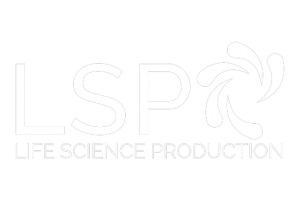Current Covid-19 testing of patent samples follows guidelines published by the WHO [1], which have been followed by health organisations in major developed countries such as the National Health Service in the UK and [2] and CDC in the USA [3].
These protocols all transport virus ‘live’ in a cell preservation media that must be kept cool (2 – 8°C) and has a limited life due to degradation. These samples are potentially infective and necessitate handling as Class Level 3 pathogens from when they are sampled at point of care (POC), through shipping, to inactivation in the initial processing at analytical laboratories. This limits laboratory testing and produces additional risk as all samples must be handled as Class Level 3 pathogens.
During previous Ebola outbreaks (another RNA virus), methods were developed to allow sampling at Point Of Care (POC) that denatured samples by immersion of swabs in a chemical denaturant that allowed subsequent processing by laboratories at Class Level 2, at a significant reduction in risk in the supply and analysis chain [4]. This methodology of denaturation of swabs by immediate immersion in high molarity guanidine thiocyanate solutions has been shown to be effective in denaturation of both Ebola (with the addition of 0.1% Triton detergent) [5} and Influenza A viruses [6] and compatible with high throughput processing [5,6].
Adoption of such viral sampling techniques could not only reduce the risk throughout the analysis chain from sampling to analysis, but also increase the number of laboratories able to process these samples at the lower Class 2 risk category, with a significant reduction in processing time [6] . This methodology has also been shown to increase the stability of samples [7], reducing the need for cold shipping and improving sample consistency due to the denaturation of RNAses within the samples.
Life Science Production are actively manufacturing viral inactivation buffer for the transport of viral samples to testing laboratories. We are delighted to support this initiative in these difficult times. For further information, please do not hesitate to contact us.
References
- https://www.who.int/publications-detail/laboratory-testing-for-2019-novel-coronavirus-insuspected-human-cases-20200117
- https://www.cdc.gov/coronavirus/2019-nCoV/lab/guidelines-clinical-specimens.html
- https://www.paho.org/hq/dmdocuments/2014/2014-cha-procedures-inactivation-ebola.pdf
- J Virol Methods. 2017 Dec;250:34-40
- Proceedings of the International Conference on Options for the Control of Influenza VI: Is Influenza A Rendered Non-Viable Following Treatment With RNA Isolation Kit Lysis/Binding Buffers? Gary L Heil, Sharon F Setterquist, Gregory C Gray
- J Virol Methods. 2008 Jun;150(1-2):41-4
- p://media.news.health.ufl.edu/misc/egh/Other/Research%20Products/Heil,%20Setterquist,%20Gray.pdf
Authors
- Robin Maytum, Principal Lecturer in Biomedical Science, University of Bedfordshire, Luton LU1 3JU
- Jennifer Murray, Managing Director, Life Science Group Ltd
- Email: jennymurray@lifesciencegroup.co.uk
- Tel: +44 (0) 1234 889180
